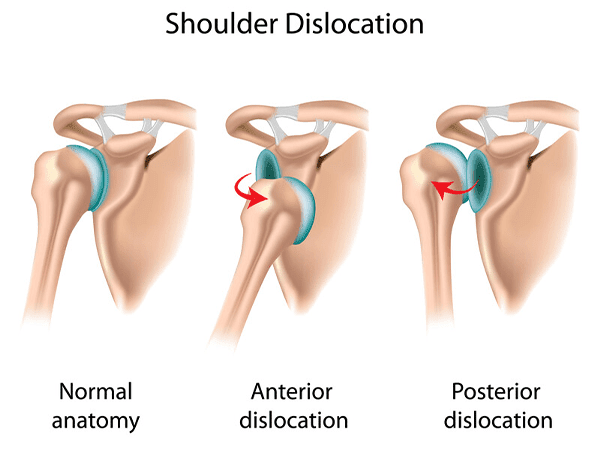- A traumatic event, such as a fall or sports injury
- A congenital defect, such as a shallow glenoid fossa
- A congenital defect, such as a shallow glenoid fossa
Symptoms of shoulder instability can vary depending on the severity of the condition. Mild cases may only cause pain and discomfort during certain activities. More severe cases may cause the shoulder to dislocate repeatedly, even with minor movements.
Treatment for shoulder instability depends on the severity of the condition. Mild cases may be treated with physical therapy and exercises to strengthen the muscles around the shoulder. More severe cases may require surgery to repair any damage to the ligaments or labrum.
Here are some tips to help prevent shoulder instability.
- Warm up before engaging in activities that put stress on the shoulder.
- Use proper technique when lifting weights or playing sports.
- Avoid activities that put your shoulder at risk of injury.
- Strengthen the muscles around the shoulder with exercises such as push-ups, pull-ups, and rows.
- See a doctor if you experience pain or discomfort in your shoulder.
If you have shoulder instability, it is important to work with a doctor or physical therapist to develop a treatment plan that is right for you. With proper care, you can reduce your risk of further injury and improve your range of motion and strength.
Here is some additional information about shoulder instability and dislocations:
- The shoulder is the most mobile joint in the body, which makes it susceptible to instability.
- Anterior shoulder instability is the most common type of shoulder instability. It occurs when the humeral head (ball) pops out
of the glenoid fossa (socket) in front. - Posterior shoulder instability is less common than anterior shoulder instability. It occurs when the humeral head pops out of
the glenoid fossa in back. - Inferior shoulder instability is the least common type of shoulder instability. It occurs when the humeral head pops out of the
glenoid fossa down. - Shoulder dislocations can be either traumatic or atraumatic. Traumatic dislocations are caused by a sudden, forceful
injury. Atraumatic dislocations are caused by repetitive use or overuse of the shoulder. - Treatment for shoulder instability and dislocations depends on the severity of the injury. Mild cases may be treated with
physical therapy and exercises. More severe cases may require surgery. - The goal of treatment is to restore the shoulder to normal function and prevent further dislocations.

How are Shoulder Dislocations and Shoulder Instability Treated?
Shoulder instability and shoulder dislocation are both conditions that involve the humerus (upper arm bone) coming out of the glenoid fossa (socket) of the shoulder. However, there are some key differences between the two conditions.
Shoulder instability is a condition in which the humerus can move out of the glenoid fossa more easily than it should. This can be caused by a variety of factors, including a previous shoulder injury, repetitive use of the shoulder, or a congenital (present at birth) abnormality.
Shoulder dislocation is a condition in which the humerus completely comes out of the glenoid fossa. This is usually caused by a traumatic event, such as a fall or a sports injury.
The diagnosis of shoulder instability or shoulder dislocation is usually made by a doctor who will perform a physical examination and order imaging tests. The physical examination will help the doctor to assess the range of motion of the shoulder, the strength of the shoulder muscles, and the presence of any pain or tenderness. Imaging tests, such as X-rays, MRIs, or CT scans, can be used to confirm the diagnosis and to look for any other injuries to the shoulder.
The treatment for shoulder instability or shoulder dislocation will vary depending on the severity of the condition. In some cases, non-surgical treatment, such as physical therapy, may be sufficient. In other cases, surgery may be necessary to repair the damage to the shoulder joint.
Here are some of the tests that your doctor may use to diagnose shoulder instability or shoulder dislocation:
Physical examination: Your doctor will examine your shoulder to look for any pain, swelling, or deformity. They will also test your range of motion and strength.
X-rays: X-rays can show any bones that are broken or out of place.
Magnetic resonance imaging (MRI): MRI is a more detailed test that can show the soft tissues of the shoulder, including the ligaments, tendons, and labrum.
Computed tomography (CT) scan: CT scan is a type of X-ray that can create detailed images of the bones in your shoulder.
If you are experiencing shoulder pain, it is important to see a doctor to get a diagnosis and treatment.
